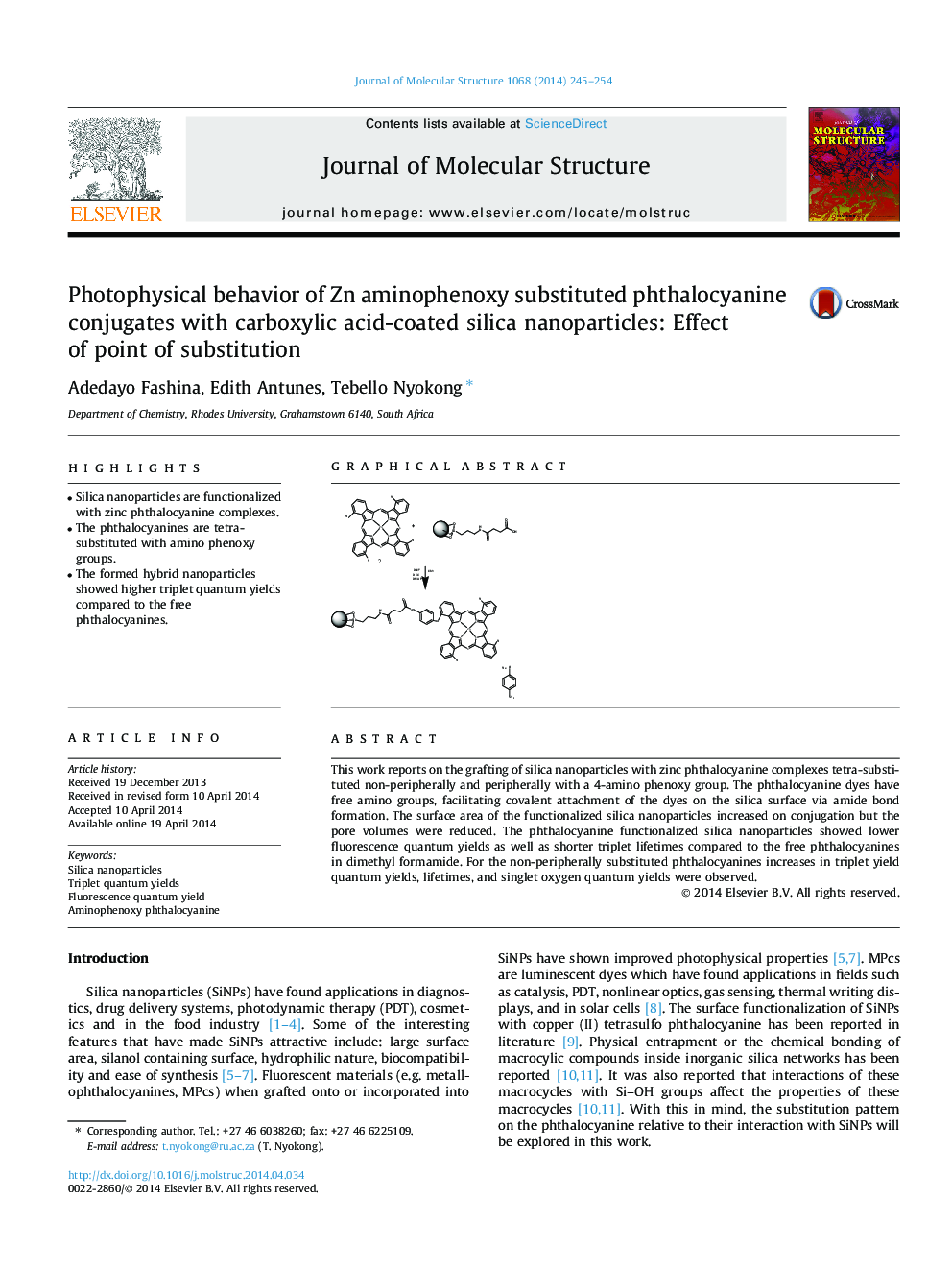| Article ID | Journal | Published Year | Pages | File Type |
|---|---|---|---|---|
| 1405557 | Journal of Molecular Structure | 2014 | 10 Pages |
•Silica nanoparticles are functionalized with zinc phthalocyanine complexes.•The phthalocyanines are tetra-substituted with amino phenoxy groups.•The formed hybrid nanoparticles showed higher triplet quantum yields compared to the free phthalocyanines.
This work reports on the grafting of silica nanoparticles with zinc phthalocyanine complexes tetra-substituted non-peripherally and peripherally with a 4-amino phenoxy group. The phthalocyanine dyes have free amino groups, facilitating covalent attachment of the dyes on the silica surface via amide bond formation. The surface area of the functionalized silica nanoparticles increased on conjugation but the pore volumes were reduced. The phthalocyanine functionalized silica nanoparticles showed lower fluorescence quantum yields as well as shorter triplet lifetimes compared to the free phthalocyanines in dimethyl formamide. For the non-peripherally substituted phthalocyanines increases in triplet yield quantum yields, lifetimes, and singlet oxygen quantum yields were observed.
Graphical abstractFigure optionsDownload full-size imageDownload as PowerPoint slide
